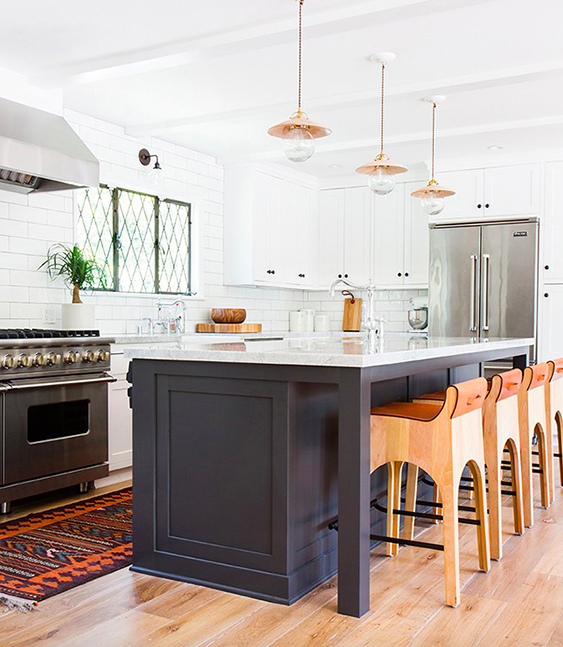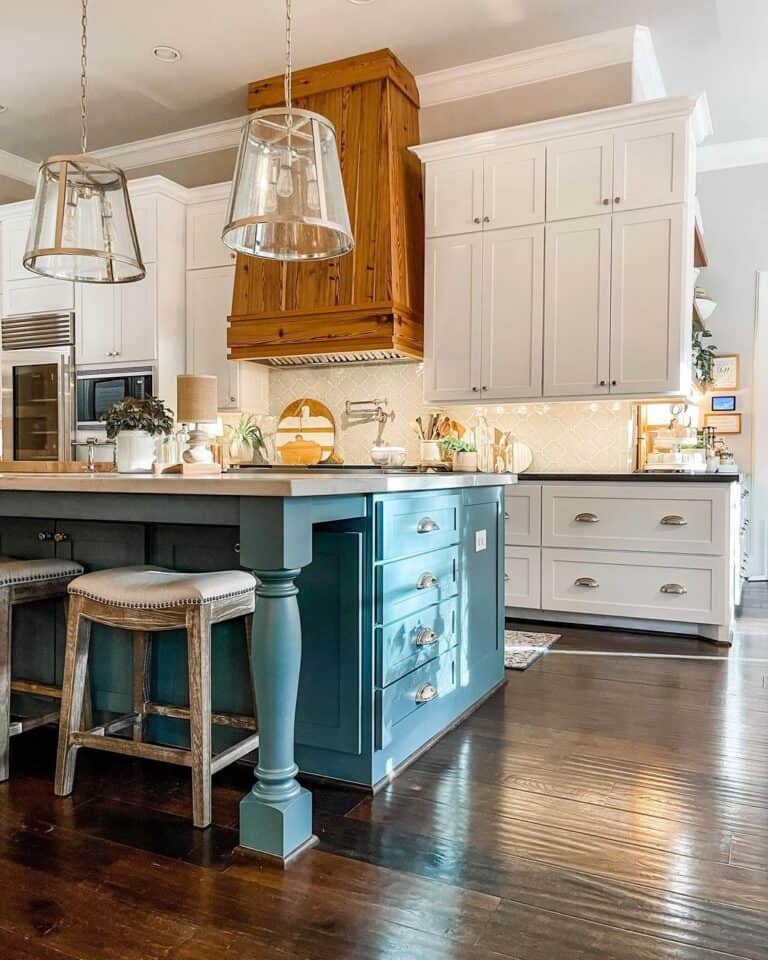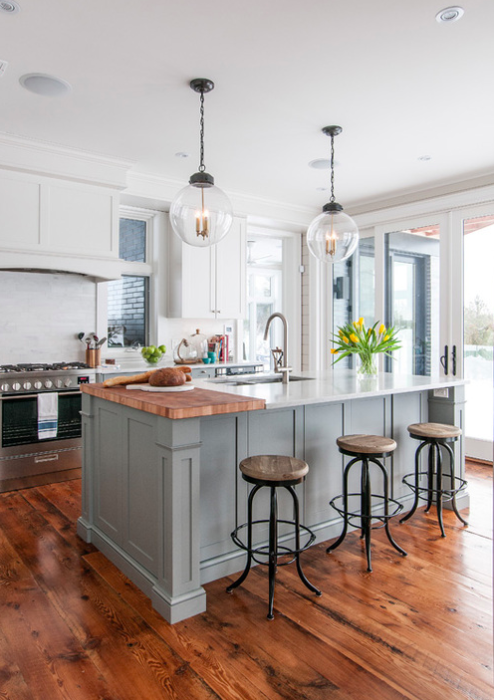Transform Your Kitchen with Beautiful Kitchen Island Legs
Transform Your Kitchen with Beautiful Kitchen Island Legs
Blog Article
Essential Tips for Picking the Perfect Eating Table for Your Kitchen Area
Choosing the perfect dining table for your kitchen area is more than just an issue of preference; it necessitates a complete understanding of your room and needs. Begin by measuring your available space to guarantee adequate clearance for activity. The form of the table plays a crucial duty; while rectangle-shaped tables suit larger areas, round ones foster affection, and extendable choices use versatility. Material option is equally crucial, with hardwoods offering longevity and glass borrowing a modern touch. The table should balance with your cooking area's aesthetics and suit your family members pleasantly. What other variables might influence this crucial decision?
Step Your Area
Selecting the optimal table begins with a precise evaluation of your readily available space. This fundamental action ensures that the table not only fits easily within the area however likewise enhances the overall layout and performance of your eating location. Begin by gauging the measurements of the room, taking into consideration doorways, windows, and any type of existing furnishings. This will help you identify the maximum allowable size for your dining table.
It is important to leave sufficient space for chairs to be drawn out and for people to relocate around the table without blockage. A general regulation of thumb is to permit at least 36 inches of clearance from the edge of the table to the local wall or piece of furnishings.
Additionally, assume regarding the number of individuals you usually entertain and whether you require extra room for guests. Deciding for an extendable table can supply flexibility, enabling you to accommodate differing numbers of restaurants. By precisely measuring your space, you prepared for choosing an eating table that enhances both the looks and performance of your dining area.
Pick the Right Forming

On the other hand, round tables are exceptional for smaller sized kitchens or intimate events, as they advertise conversation by enabling every person to encounter each other. They likewise give a sense of coziness and can fit well in tighter rooms as a result of their lack of sharp corners. Oval tables use the best of both worlds, integrating the size of rectangle-shaped tables with the intimacy of round ones, making them flexible for different setups.
Square tables are another choice, especially matched for square-shaped areas. They develop a symmetrical and modern appearance, cultivating an equal dining experience for all seated. They may be less useful for larger events unless they come with expansions. Inevitably, the shape you choose ought to straighten with your room dimensions and lifestyle to guarantee both type and feature.
Material Factors To Consider
When selecting a dining table, material factors to consider are paramount in figuring out the table's resilience, maintenance requirements, and total visual. Timber is a traditional option, providing ageless charm and toughness. Hardwoods like walnut, mahogany, and oak are especially resilient, though they can be costly. kitchen island legs. Softwoods, such as pine, are more economical however may be prone to damages and scrapes.
Glass-topped tables give a contemporary, sleek appearance and can make a space show up larger as a result of their transparency. They need constant cleaning to protect against finger prints and smudges. Furthermore, toughened up glass is suggested for its extra stamina and safety and security.

Last but not least, composite products like MDF (Medium-Density Fiberboard) or plywood are budget-friendly choices. These products can simulate the appearance of strong wood but might not provide the same long life. They are normally easier to tidy yet can be vulnerable to water damage otherwise properly secured.
Eventually, the choice of product ought to align with your cooking area's style, your lifestyle requires, and your he said budget restraints. (kitchen island legs)
Seating Ability and Comfort
Just how do you identify the right seating ability and convenience for your dining table? This critical step entails evaluating both the physical space offered in your kitchen and your house's practical demands. Begin by determining your kitchen area to make certain the table fits easily, allowing at the very least 36 inches of clearance around it for simple movement. Take into consideration the number of individuals that typically dine together, as this will affect the table dimension. For a family of 4, a rectangle-shaped table of 48 inches long or important link a round table with a 48-inch size is usually sufficient.
Comfort is equally necessary. The elevation of the table need to preferably be around 30 inches, providing a balanced ergonomic stance for seated diners. Chairs ought to sit elevation of 18 to 20 inches to make sure a comfy eating pose. In addition, consider the chair design; upholstered seats and helpful backrests can enhance dining comfort considerably, particularly throughout long term dishes.
Style and Looks
Picking a table that suits your style and visual appeal involves balancing individual preference with the existing decoration of your dining area. The table is usually the focal point of the cooking area, and its layout needs to enhance the total style of the space. Whether your kitchen area boasts a contemporary, minimalist look or a rustic, farmhouse appeal, the table you select ought to balance with these aspects to develop a natural and welcoming ambience.
Think about materials thoroughly; wood offers a timeless appeal and can vary from rich mahogany for a typical appearance to lighter oak for a modern feeling. Metal and glass tables, on the various other hand, can introduce a sleek, commercial edge to your cooking area. Do not ignore the table's shape-- rectangle-shaped tables are timeless and flexible, while round and oval alternatives can promote a more intimate eating experience.
In addition, pay attention to finishes and details. A troubled finish could add character and heat, whereas a glossy surface area can add to a clean, contemporary aesthetic. Eventually, your dining table ought to not just fit flawlessly right into your kitchen's style yet also show your individual design, elevating the area both functionally and aesthetically.
Conclusion
To conclude, picking the suitable eating table for a kitchen requires mindful evaluation of area, form, product, seating capacity, and aesthetic consistency. Ensuring a minimum clearance of 36 inches assists in comfy movement, while the option of form boosts spatial characteristics. Material selection effects durability and design, making it vital to line up with the kitchen's overall aesthetic. Eventually, an appropriate eating table cultivates an inviting atmosphere and fits the family pleasantly, hence boosting the dining experience.

When picking an eating table, material considerations are extremely important in figuring out the table's sturdiness, maintenance requirements, and overall visual. For a family of four, a rectangle-shaped table of 48 inches long or a round table with a 48-inch diameter is generally sufficient.
Do not ignore the table's shape-- rectangle-shaped tables are functional and traditional, while round and oval alternatives can foster an extra intimate eating experience. kitchen island legs.
Report this page